Meditative drumming is a form of meditation where the drum’s rhythm, sound, and feeling are the objects of focus. Similar to other forms of focus meditation, meditative drumming brings awareness and attention to the present moment.
A growing body of research, from around the world, shows its many therapeutic benefits. Drumming is more than just making music: it has a significant impact on our mental, emotional, and physical health.
A study conducted by researchers at Loma Linda University found that drumming circles can increase immunity and encourage healing in people with cancer. Dr. Barry Bittman, a neurologist, and one of the lead researchers in the study, has been an author in many studies that show the link between rhythmic drumming and improved health.
Rhythmic drumming is also shown to reduce pain, and the stress of being in the hospital. A study conducted by Wake Forest University showed that patients who participated in drumming had a significant reduction in pain, stress and anxiety. In addition, rhythmic drumming increased their energy, mood and helped them feel more relaxed.
When people are relaxed, their perceptions of pain and pain symptoms decreases. Likewise, engaging in drumming, in addition to being fun and relaxing, is a great way for patients to actively distract themselves from pain symptoms.
Like a good workout, or maybe even eating a bit of chocolate, drumming releases endorphins, those feel-good hormones that elevate your mood.
Even without the scientific research behind it, the very act of drumming just seems therapeutic. It involves using your mind and your body. It’s cathartic. Getting lost in the beat, you start to relax, and quite quickly, you start to feel better. Happier. More balanced. Studies have found that the repetitive rhythms and beats of drumming have a positive effect on the mind and this consequently relieves stress. A 2016 peer-reviewed article found that drumming releases endorphins, which can boost overall mood and also reduce pain.
According to a study published in Evidence Based and Complementary and Alternative Medicine, researchers found that drumming, as part of a therapy plan, reduced stress levels in children. Drumming was also found to help children with behavior and attention problems.
Many turn to meditation to settle their “monkey mind” that, like a monkey, hops from one thought to the next. The goal in meditation is not to become “thought-less” but rather aware of the times that your mind, like a monkey or an energetic puppy, begins roaming about.
Remember, we will always think thoughts. That’s what the mind does. Meditation helps us become aware of the times our mind strays and helps us train it to focus on an object, the breath, or in this case, the drums.
Drumming is an especially helpful meditation practice because the beat of the drum, like the steady rhythm of your heartbeat, encourages instant focus. When you hear the beat of the drum you get a strong focus point that is both calming and grounding. For this reason, drumming is perfect for children with ASD or ADHD. The combination of rhythm, movement, and concentration helps kids focus and calm down.
Like other forms of meditation, kids can greatly benefit from meditative drumming. Drumming is a beneficial way to encourage kids to meditate through sound and movement. Many kids naturally love making music, whether that is a musical instrument or an object of their choice, making meditative drumming a developmentally appropriate practice.
According to Christine Stevens, musician, author, music therapist, and creator of Upbeat Drum Circles, drumming is especially good for kids because it is an active meditation. For many kids with ADHD, autism, or Down syndrome, meditating while sitting still is very difficult. But when children drum, they are moving AND meditating, and this helps keep them interested and engaged. Stevens says drumming changes the brain from the self-absorbed network to the experiencing network.
What this means is that when kids are drumming, they aren’t focusing on anxiety, negative self-talk, or maybe even feelings of inadequacy or illness. Drumming takes their mind off of themselves, and they begin to experience the music, the beat, the rhythm of drumming, and this is quite healing.
Jim Donovan is a multi-platinum recording artist, trainer, Assistant Professor and Director of Music and Wellness at Saint Francis University and TEDx speaker.
Donovan says that another good reason for kids to meditate with drums is that drumming helps them build coordination and new neural connections.
When kids learn a new skill, like meditative drumming, their neural connections become stronger. This means that their brains grow and it is easier for them to learn new things, especially when they do the activity over and over again.
Drumming, like meditation, should be practiced often. Because little ones like drumming so much, they really don’t need much encouragement. What they do need, however, is guidance on how to make drumming meditative, so it isn’t just play time.
In meditation, the object of focus can be many things, including the breath, an object, or a mantra. When a child drums, the beat or rhythm of the drum can become the mantra, or can be used to enhance the mantra, to hold their attention. Drumming helps bring children quickly into the moment, and out of thoughts which may be intrusive, or filled with worries, or negativity.
With each beat of the drum children fall into a peaceful state that is calming and beneficial for their mind and body.
1. You don’t need a drum, but you can certainly use one. Children can drum with their hands, or a mallet, on a drum, on their laps, or even just clap. Kids also like “drumming” with little egg shakers. They are tiny and fit nicely in little hands.
2. Invite kids to make their drumming space sacred, and special. Some ways to do this include:
3. Begin drumming. Kids can drum to the beat of the music, to the beat of their heart, or follow whatever rhythm they like. If at all possible, encourage them to drum for at least four minutes. This is the duration that researchers and experts like Stevens and Donovan say, it takes for a relaxation effect to occur.
4. Kids can drum to a favorite song, to the sound of their name or to a favorite nursery rhyme.
5. Donovan says it’s really person-specific, but even as little as 10 minutes of drumming can start to make a real difference. This doesn’t need to be all at once. What helps the most is regular repetition at least 2-3 times per week or more. Drumming over and over again is key to helping kids build those new neural connections and coordination.
6. When your child is ready to end their drumming, invite them to slowly stop, and take a few breaths in the silence.
If your little one would like to explore drumming along with Dragon and his friends, a subscription to Wee Meditate offers them drumming music to meditate with and our mini meditations, The Rhythm of the Drum and Heart Beats.
Sign up today to give your child access to a storybook world filled with meditations, music, bedtime stories, and more.

